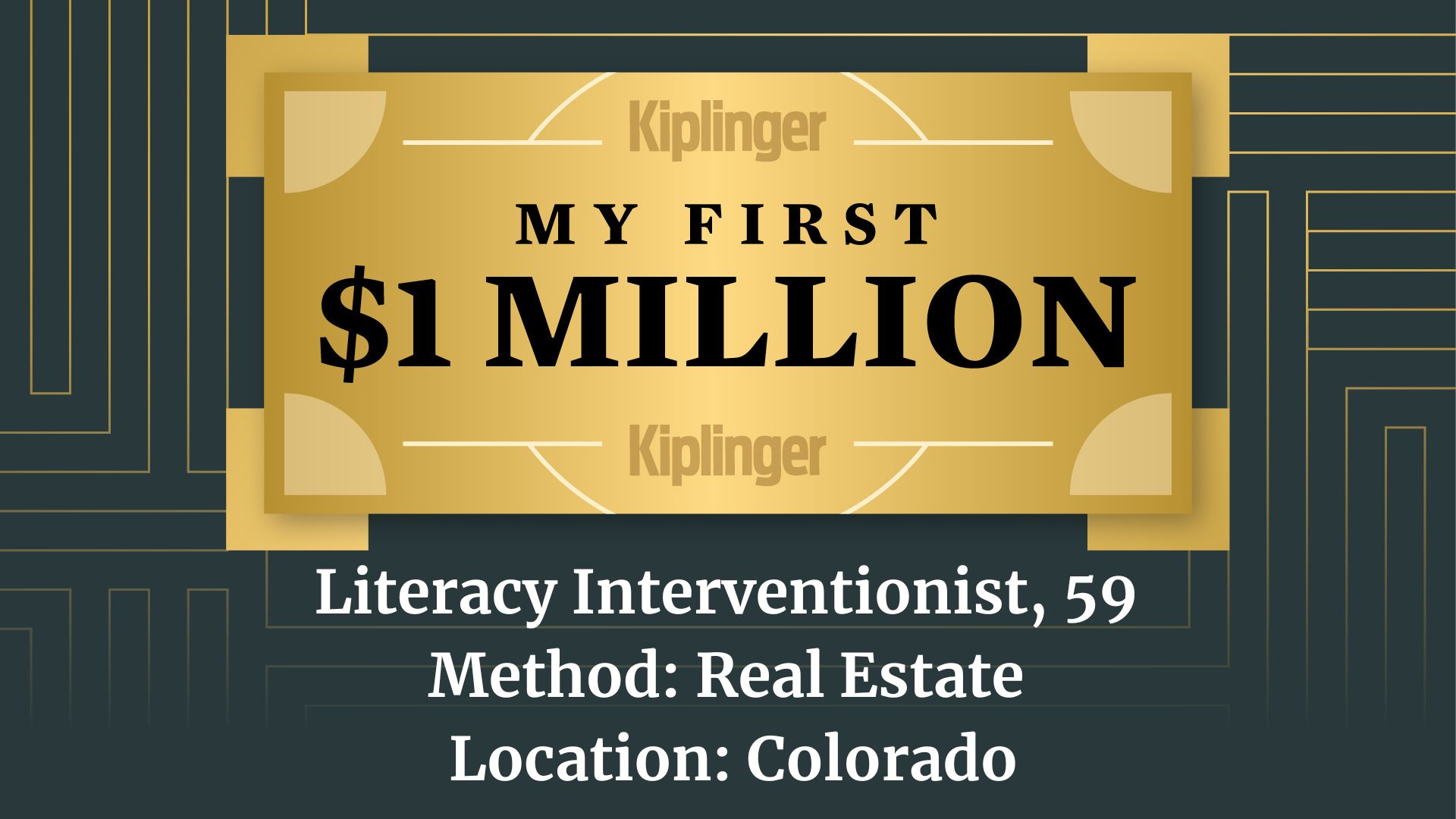States With the Highest and Lowest Earning College Graduates
Find out which state's college graduates earn the most (and the least) on average.


We’re in the midst of graduation season — across the country, college grads are walking across the stage to accept their hard-earned diplomas. But after one big accomplishment comes another. Now’s the time to find a job and get serious about your finances. Not only does your degree factor into how much money you’ll make, but where you live also plays a part.
A recent study from Teach Simple determined the states with the highest and lowest median university earnings, using information from the U.S. Department of Education’s College Scorecard. The study analyzed and compared institutions within each state to determine the ranking order, considering three factors: median earnings of people who began college 10 years ago, the average annual cost a student who receives federal financial aid will pay to cover expenses and the average graduation rate within eight years of entering the school.
“Policies and regulations, such as minimum wage laws, tax policies, and labor regulations, differ across states and therefore impact earnings across institutions, says Cole Vineyard, founder of Teach Simple. “States with higher minimum wages or more worker-friendly policies may offer higher earnings for workers across all sectors.”

Sign up for Kiplinger’s Free E-Newsletters
Profit and prosper with the best of expert advice on investing, taxes, retirement, personal finance and more - straight to your e-mail.
Profit and prosper with the best of expert advice - straight to your e-mail.
Which states have the highest earning graduates?
According to Teach Simple’s data, these are the states with the highest earning graduates.
Also included is the institution in each state with the graduates who earn the most, four years after getting their degree, determined by Degree Choices. To determine which school had the biggest earners, Degree Choices analyzed 2022 data from the Department of Education’s College Scorecard on the median earnings of degree holders who received at least $1 in financial aid and who were working (and not enrolled) four years after completing their degree.
1. Massachusetts
- Average of each institution's median earnings: $65,319
- Average annual cost of school: $26,268
- Average graduation rate: 67%
- Institution with the biggest earners: Massachusetts Institute of Technology (MIT)
2. Rhode Island
- Average of each institution's median earnings: $64,818
- Average annual cost of school: $29,083
- Average graduation rate: 68%
- Institution with the biggest earners: Bryant University
3. Connecticut
- Average of each institution's median earnings: $64,720
- Average annual cost of school: $22,889
- Average graduation rate: 59%
- Institution with the biggest earners: The American Sentinel College of Nursing and Health Science
4. Maryland
- Average of each institution's median earnings: $60,286
- Average annual cost of school: $18,103
- Average graduation rate: 58%
- Institution with the biggest earners: Capitol Technology University
5. District of Columbia
- Average of each institution's median earnings: $59,364
- Average annual cost of school: $25,000
- Average graduation rate: 40%
- Institution with the biggest earners: N/a
“Education is extremely beneficial for economic success. Individuals with higher levels of education will have access to better job opportunities, higher salaries and greater job security," says Vineyard.
States with the lowest earning graduates
On the other hand, these are the states with the lowest earning graduates.
47. North Dakota
- Average of each institution's median earnings: $43,000
- Average annual cost of school: $12,867
- Average graduation rate: 40%
48. Kentucky
- Average of each institution's median earnings: $42,000
- Average annual cost of school: $15,811
- Average graduation rate: 47%
49. Arkansas
- Average of each institution's median earnings: $41,481
- Average annual cost of school: $14,143
- Average graduation rate: 43%
50. Mississippi
- Average of each institution's median earnings: $39,235
- Average annual cost of school: $13,750
- Average graduation rate: 45%
51. New Mexico
- Average of each institution's median earnings: $38,417
- Average annual cost of school: $14,833
- Average graduation rate: 46%
Bottom line
The Northeast has the highest earning graduates in the country, while the South and Midwest have the lowest, according to the data. Colleges in the Northeast also cost more, on average, and the cost of living is also higher in this area. While location isn't the be-all and end-all of how much money you'll make once receiving your degree, it is wise to pay attention to your state's post-graduation economic outcomes before committing to the financial burden of student loans.
Related Content
Get Kiplinger Today newsletter — free
Profit and prosper with the best of Kiplinger's advice on investing, taxes, retirement, personal finance and much more. Delivered daily. Enter your email in the box and click Sign Me Up.

Erin pairs personal experience with research and is passionate about sharing personal finance advice with others. Previously, she was a freelancer focusing on the credit card side of finance, but has branched out since then to cover other aspects of personal finance. Erin is well-versed in traditional media with reporting, interviewing and research, as well as using graphic design and video and audio storytelling to share with her readers.
-
 Should You Do A Roth IRA Conversion? Nine Things to Consider
Should You Do A Roth IRA Conversion? Nine Things to ConsiderThe Tax Letter Thinking of converting a traditional IRA to a Roth IRA? The Kiplinger Tax Letter Editor highlights nine factors you should consider before making a move.
By Joy Taylor
-
 33 Stocks That Could Rally 50% or More This Year
33 Stocks That Could Rally 50% or More This YearAnalysts say these S&P 500 stocks have at least 50% price upside over the next year or so.
By Dan Burrows
-
 Reminder: The Basics of Using HSA Funds
Reminder: The Basics of Using HSA FundsHealth savings accounts (HSAs)can help you cover out-of-pocket medical costs. Just make sure you understand the rules and keep records of qualifying expenses.
By Ella Vincent
-
 A Checklist for High-Net-Worth Individuals: How to Protect and Grow Your Wealth
A Checklist for High-Net-Worth Individuals: How to Protect and Grow Your WealthA strategic guide to managing, preserving, and expanding your wealth for long-term financial security.
By Dori Zinn
-
 Earn a 50% Discount to The Cultivist With Capital One Venture X
Earn a 50% Discount to The Cultivist With Capital One Venture XTour some of the world's top art museums for less when you use your Capital One Venture X card to score a 50% discount to The Cultivist.
By Sean Jackson
-
 Going to College? How to Navigate the Financial Planning
Going to College? How to Navigate the Financial PlanningCollege decisions this year seem even more complex than usual, including determining whether a school is a 'financial fit.' Here's how to find your way.
By Chris Ebeling
-
 My First $1 Million: Literacy Interventionist, 59, Colorado
My First $1 Million: Literacy Interventionist, 59, ColoradoEver wonder how someone who's made a million dollars or more did it? Kiplinger's new My First $1 Million series uncovers the answers.
By Joyce Lamb
-
 Charitable Giving Lessons From Netflix's 'Apple Cider Vinegar'
Charitable Giving Lessons From Netflix's 'Apple Cider Vinegar'Charity fraud is rife, and a Netflix series provides a timely warning about donating money to a good cause without looking into its background.
By Peter J. Klein, CFA®, CAP®, CSRIC®, CRPS®
-
 What Happens To Mortgage and Savings Rates If Trump Fires Jerome Powell?
What Happens To Mortgage and Savings Rates If Trump Fires Jerome Powell?President Donald Trump expressed his desire to remove Fed Chair Jerome Powell. If the president is successful, how would it impact your savings accounts?
By Sean Jackson
-
 What to Stock Up On (and What to Skip) Before Tariffs Raise Prices
What to Stock Up On (and What to Skip) Before Tariffs Raise PricesWith tariffs set to return on July 8, 2025, prices on everything from appliances to clothing could rise. Learn what to buy now, what to skip and how to protect your budget.
By Laura Gariepy